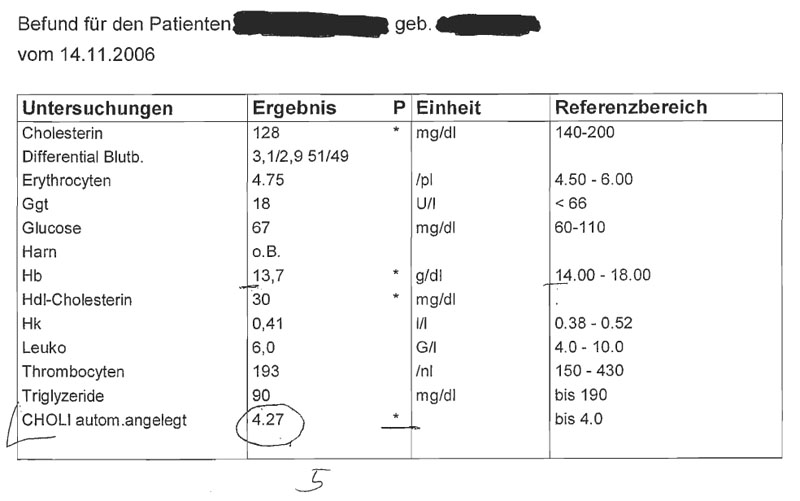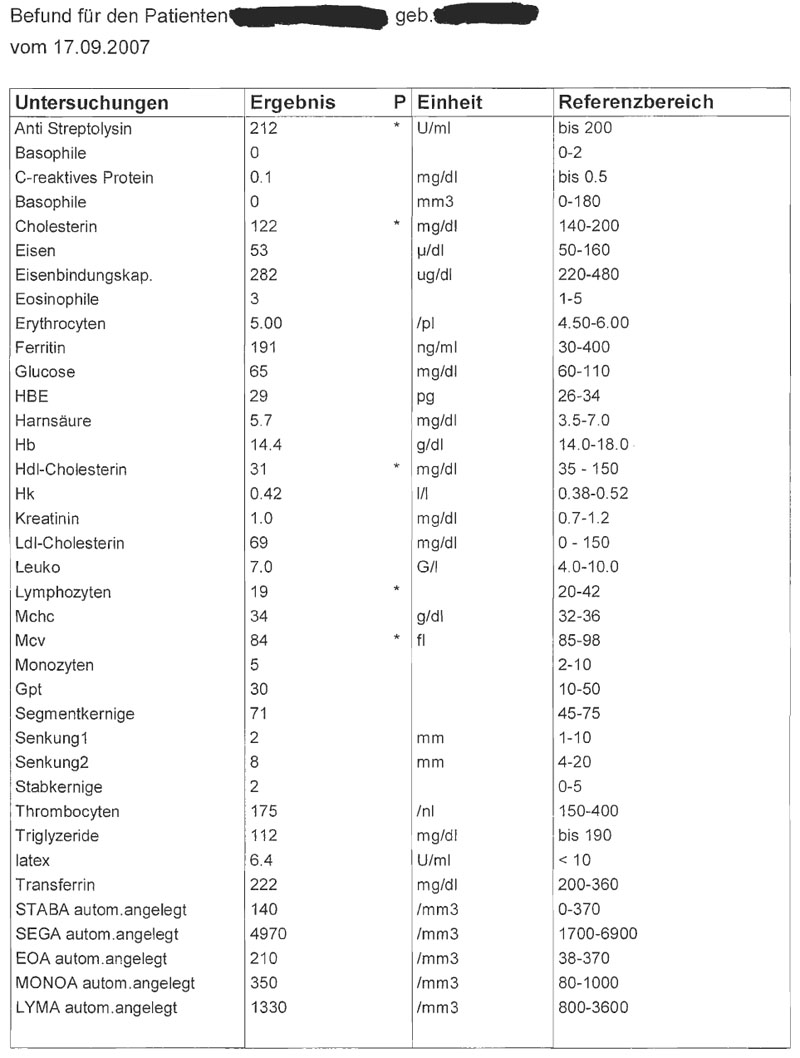Teaching:TUW - UE InfoVis WS 2007/08 - Gruppe 05 - Aufgabe 4: Difference between revisions
No edit summary |
No edit summary |
||
| Line 21: | Line 21: | ||
# The dataset is multidimensional. There are many different datasets over time, thus the datasets are temporal as well. There is no hierarchy within the datasets, all measured values in one dataset are independent of each other (but the measured values are dependent over time!). | # The dataset is multidimensional. There are many different datasets over time, thus the datasets are temporal as well. There is no hierarchy within the datasets, all measured values in one dataset are independent of each other (but the measured values are dependent over time!). | ||
=== target group analysis === | |||
The target group of our visualisation are doctors, who need the results of blood tests for their daily work. So the visualisation should be very intuitive and easy to understand and you should get the most important information at a glance. The medical knowledge about the visualised data is very high and the users (doctors) are familiar with these kind of data. It's not necassary to explain the different values in detail, because they know all of them. But they have to interprete these datasets to draw the right conclusion. | |||
== Links == | == Links == | ||
Revision as of 13:10, 30 December 2007
Aufgabenstellung
Aufgabe ist das Design einer interaktiven Visualisierungsapplikation zur Darstellung und Exploration
(des zeitlichen Verlaufs) von Laborwerten einer Blutuntersuchung. BenutzerInnen, Einsatzzweck, Tasks, etc.
sollen von Euch selbst festgelegt und beschrieben werden.
Beispiele für derartige Datensätze
Target exploration
Target and dataset description
field of appliation
This visualization is used in a medical environment to show the different results of blood examinations over time. It's important to highlight values, which are not in the "normal" range, so that you can recognize those values at a glance. It's possible to measure different values at every blood test. Thereby the structure of the datasets can be different for every blood test. The datasets are usually very big and are very complex to analyze.
Datasetanalysis
- The measured values (Cholesterin, Glucose,...) are ordinal and continuous. Those values are numbers. The reference values "date of birth" and "date of examination" are ordinal as well, but discrete. The reference value "patient's name" is nominal and discrete (because you can only choose from 26 letters).
- The dataset is multidimensional. There are many different datasets over time, thus the datasets are temporal as well. There is no hierarchy within the datasets, all measured values in one dataset are independent of each other (but the measured values are dependent over time!).
target group analysis
The target group of our visualisation are doctors, who need the results of blood tests for their daily work. So the visualisation should be very intuitive and easy to understand and you should get the most important information at a glance. The medical knowledge about the visualised data is very high and the users (doctors) are familiar with these kind of data. It's not necassary to explain the different values in detail, because they know all of them. But they have to interprete these datasets to draw the right conclusion.

